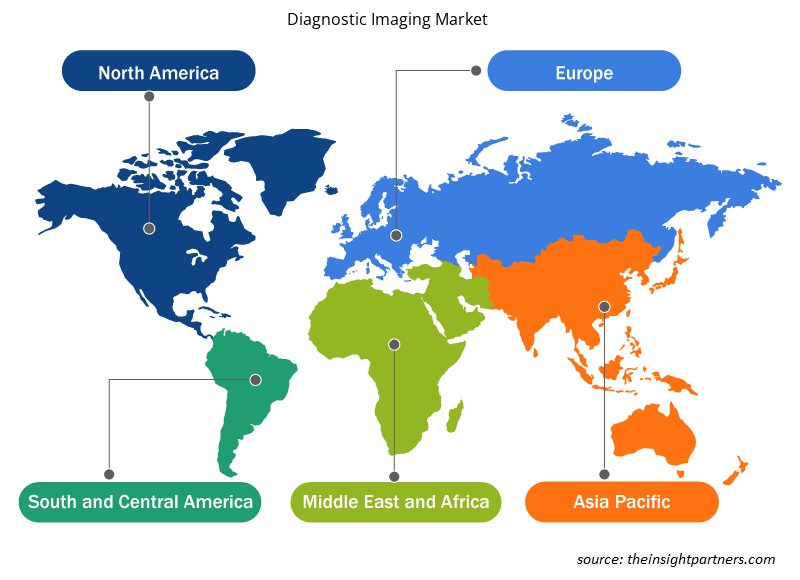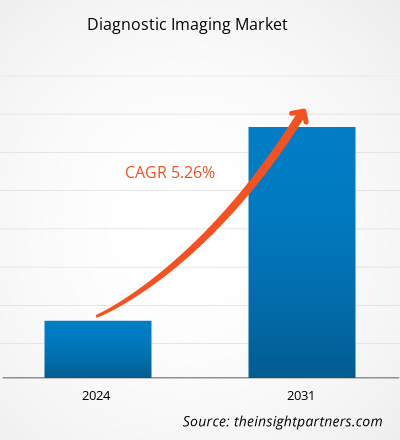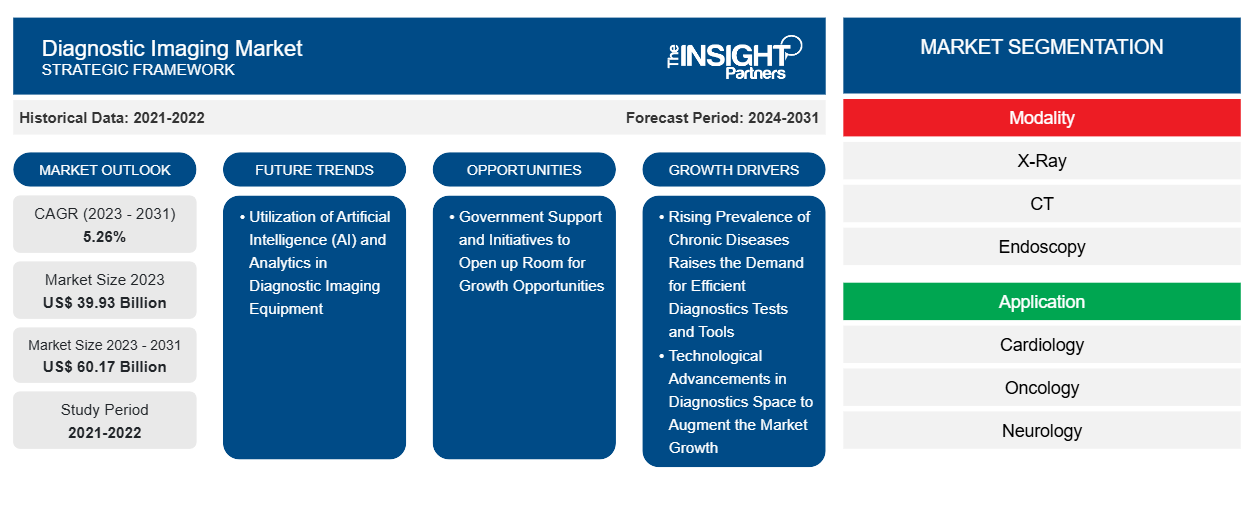诊断成像市场规模预计将从 2023 年的 399.3 亿美元增至 2031 年的 601.7 亿美元。预计 2023-2031 年期间市场复合年增长率为 5.26%。诊断成像设备中人工智能 (AI) 和分析的日益普及可能仍将是市场的主要趋势。
诊断成像市场分析
诊断成像描述了各种技术,用于直观地表示人体的不同组织和器官,以确定疾病或损伤的原因、确认诊断并监测治疗反应。各种机器和技术,如 X 射线、计算机断层扫描 (CT)、正电子发射断层扫描 (PET)、磁共振成像 (MRI)、单光子发射计算机断层扫描 (SPECT)、数字乳房 X 线摄影和诊断超声检查,都可以生成身体内部结构和活动的图像。许多成像测试都是非侵入性的、简单的和无痛的。但是,有些可能需要您长时间静止在机器内,这可能会有些不舒服。此外,某些测试涉及少量辐射暴露。慢性病患病率的增加是市场增长的主要驱动因素。此外,医疗诊断领域的新发展也有助于预测期内的市场增长。
诊断成像市场概况
2023 年,亚太地区预计将以全球诊断成像市场最高的复合年增长率增长。由于中国、日本和印度等国家的发展,亚太地区诊断成像市场预计将大幅增长。根据 2023 年 9 月美国国家医学图书馆 (NLM) 发表的一篇文章,高知县每 10 万人口的 CT 扫描仪数量最多,而东京都医院的 CT 扫描仪数量最多。因此,亚太地区的市场受到来自亚洲多个国家的国际参与者不断增长的投资推动。因此,该地区对诊断成像市场参与者在预测期内具有巨大的增长潜力。
定制此报告以满足您的需求
您可以免费定制任何报告,包括本报告的部分内容、国家级分析、Excel 数据包,以及为初创企业和大学提供优惠和折扣
-
获取此报告的关键市场趋势。这个免费样品将包括数据分析,从市场趋势到估计和预测。
诊断成像市场驱动因素和机遇
诊断成像技术进步利好市场
正如世界卫生组织 (WHO) 所强调的那样,诊断成像技术发展迅速,通过支持各种疾病的诊断和治疗,在医疗保健中发挥着至关重要的作用。诊断成像服务包括确认、评估和记录许多疾病的病程,以最终得出治疗反应。根据 AdventHealth University 于 2021 年 10 月发表的一篇文章,近年来,数字射线照相术取得了许多进步。这些进步包括人工智能辅助 X 射线解释、双能量成像、计算机辅助诊断、断层合成、自动图像拼接和数字移动射线照相术。这些进步提高了图像质量,最终增强了患者护理并支持更好的患者治疗结果。此外,使用数字射线照相术减少了重拍的需要,从而降低了辐射暴露。
疾病诊断成像技术的进步促进了诊断成像市场的增长。
政府举措带来增长机遇
政府在全世界范围内采购、定价和分销医疗设备方面发挥着至关重要的作用。各国政府采取各种举措发展医疗基础设施,并通过资助开设新的医疗机构,专注于提供安全且具有成本效益的医疗产品。例如,在英国,国家医疗服务体系旨在通过具有成本效益的方式解决患者未满足的医疗需求,以促进该国的经济增长。此外,由于 2020 年加拿大缺乏私人资金,政府向医院支付了每位患者每次扫描 1,400 美元的费用。
此外,世卫组织和联合国儿童基金会 (UNICEF) 等非营利监管机构与制造商合作,开发有效的解决方案,旨在改善偏远地区的诊断服务。此外,这些组织还提供有关成像技术使用和管理的培训计划,更加注重患者安全。例如,2022 年 2 月,西门子医疗与联合国儿童基金会合作,支持改善撒哈拉以南非洲地区诊断技术的医疗保健服务。
上述因素为促进诊断成像市场的增长提供了有利可图的机会。
诊断成像市场报告细分分析
有助于得出诊断成像市场分析的关键部分是模式、应用和最终用户。
- 诊断成像市场根据方式细分为 X 射线、CT、内窥镜检查、超声、MRI、核成像、乳房 X 线摄影等。ELISA 测试细分市场在 2023 年占据了最大的市场份额。
- 根据应用,市场细分为心脏病学、肿瘤学、神经病学、骨科、胃肠病学、妇产科等。禽流感领域在 2023 年占据了最大的市场份额。
- 根据最终用户,市场细分为医院和诊所、诊断成像中心、门诊手术中心等。医院和诊所部分在 2023 年占据了最大的市场份额。
诊断成像市场份额按地区分析
诊断成像市场报告的地理范围主要分为五个区域:北美、亚太、欧洲、中东和非洲、南美和中美。
北美拥有下一代测序市场的最大市场份额。北美的诊断成像市场基于美国、加拿大和墨西哥进行分析。预计美国将在 2023 年主导北美诊断成像市场。由于成像模式的创新推出和监管机构的批准,美国的诊断成像利用率很高。例如,2021 年 9 月,FDA 宣布批准计算机断层扫描 (CT) 成像的第一个重大技术进步。该设备利用光子计数探测器的新兴 CT 技术来测量穿过患者身体的每一个 X 射线。FDA 还审查了西门子于 2021 年制造的新型诊断成像设备“NAEOTOM Alpha”。成像模式的这种技术进步加速了美国诊断成像的普及。
此外,随着美国人口老龄化,用于诊断、检测和治疗老年人群常见的许多慢性健康状况和疾病的诊断成像技术的需求预计将高速增长。
因此,北美市场的增长源于该地区对诊断成像技术的需求不断增长。
诊断成像市场区域洞察
Insight Partners 的分析师已详尽解释了预测期内影响诊断成像市场的区域趋势和因素。本节还讨论了北美、欧洲、亚太地区、中东和非洲以及南美和中美洲的诊断成像市场细分和地理位置。

- 获取诊断成像市场的区域特定数据
诊断成像市场报告范围
| 报告属性 | 细节 |
|---|---|
| 2023 年的市场规模 | 399.3亿美元 |
| 2031 年市场规模 | 601.7亿美元 |
| 全球复合年增长率(2023 - 2031) | 5.26% |
| 史料 | 2021-2022 |
| 预测期 | 2024-2031 |
| 涵盖的领域 |
按方式
|
| 覆盖地区和国家 |
北美
|
| 市场领导者和主要公司简介 |
|
诊断成像市场参与者密度:了解其对业务动态的影响
诊断成像市场正在快速增长,这得益于终端用户需求的不断增长,而这些需求又源于消费者偏好的不断变化、技术进步以及对产品优势的认识不断提高等因素。随着需求的增加,企业正在扩大其产品范围,进行创新以满足消费者的需求,并利用新兴趋势,从而进一步推动市场增长。
市场参与者密度是指在特定市场或行业内运营的企业或公司的分布情况。它表明在给定市场空间中,相对于其规模或总市场价值,有多少竞争对手(市场参与者)存在。
在诊断成像市场运营的主要公司有:
- 通用电气公司
- 西门子医疗
- 荷兰皇家飞利浦公司
- 卡尔史托斯股份两合公司
- 富士胶片控股株式会社
- 佳能公司
免责声明:上面列出的公司没有按照任何特定顺序排列。

- 获取诊断成像市场顶级关键参与者概述
诊断成像市场新闻和最新发展
通过收集来自一手和二手研究的定性和定量数据来评估诊断成像市场,其中包括重要的公司出版物、协会数据和数据库。诊断成像市场的一些发展如下所列:
- Wipro GE Healthcare 宣布推出其下一代 Revolution Aspire CT(计算机断层扫描)扫描仪。Revolution Aspire 是一款先进的成像解决方案,由新成立的 Wipro GE 医疗设备制造工厂在印度端到端设计和制造,符合“Atmanirbhar Bharat”计划。CT 系统配备了更高的成像智能,可在诊断疾病和异常时提高临床信心。(来源:GE HealthCare,新闻稿,2022 年)
- Zionexa 是一家领先的体内肿瘤学和神经学生物标志物创新公司,其产品有助于实现更加个性化的医疗保健,现已被 GE Healthcare 收购。Cerianna(氟雌二醇 F-18)是一种经 FDA 批准的 PET 成像剂,可作为活检的辅助手段,用于检测雌激素受体 (ER) 阳性病变,以帮助为复发性或转移性乳腺癌患者提供治疗选择信息,该公司正在扩大其规模。(来源:GE HealthCare,新闻稿,2021 年)
诊断成像市场报告覆盖范围和交付成果
“诊断成像市场规模和预测(2021-2031)”报告对以下领域进行了详细的市场分析:
- 诊断成像市场规模及全球、区域和国家层面所有主要细分市场的预测
- 诊断成像市场趋势以及市场动态,如驱动因素、限制因素和关键机遇
- 详细的 PEST/波特五力分析和 SWOT 分析
- 诊断成像市场分析涵盖主要市场趋势、全球和区域框架、重要参与者、法规和最新市场发展
- 行业格局和竞争分析,涵盖市场集中度、热图分析、知名参与者以及诊断成像市场的最新发展
- 详细的公司简介
- 历史分析(2 年)、基准年、预测(7 年)及复合年增长率
- PEST和SWOT分析
- 市场规模、价值/数量 - 全球、区域、国家
- 行业和竞争格局
- Excel 数据集
近期报告
客户评价
购买理由
- 明智的决策
- 了解市场动态
- 竞争分析
- 客户洞察
- 市场预测
- 风险规避
- 战略规划
- 投资论证
- 识别新兴市场
- 优化营销策略
- 提升运营效率
- 顺应监管趋势























 获取免费样品 - 诊断成像市场
获取免费样品 - 诊断成像市场